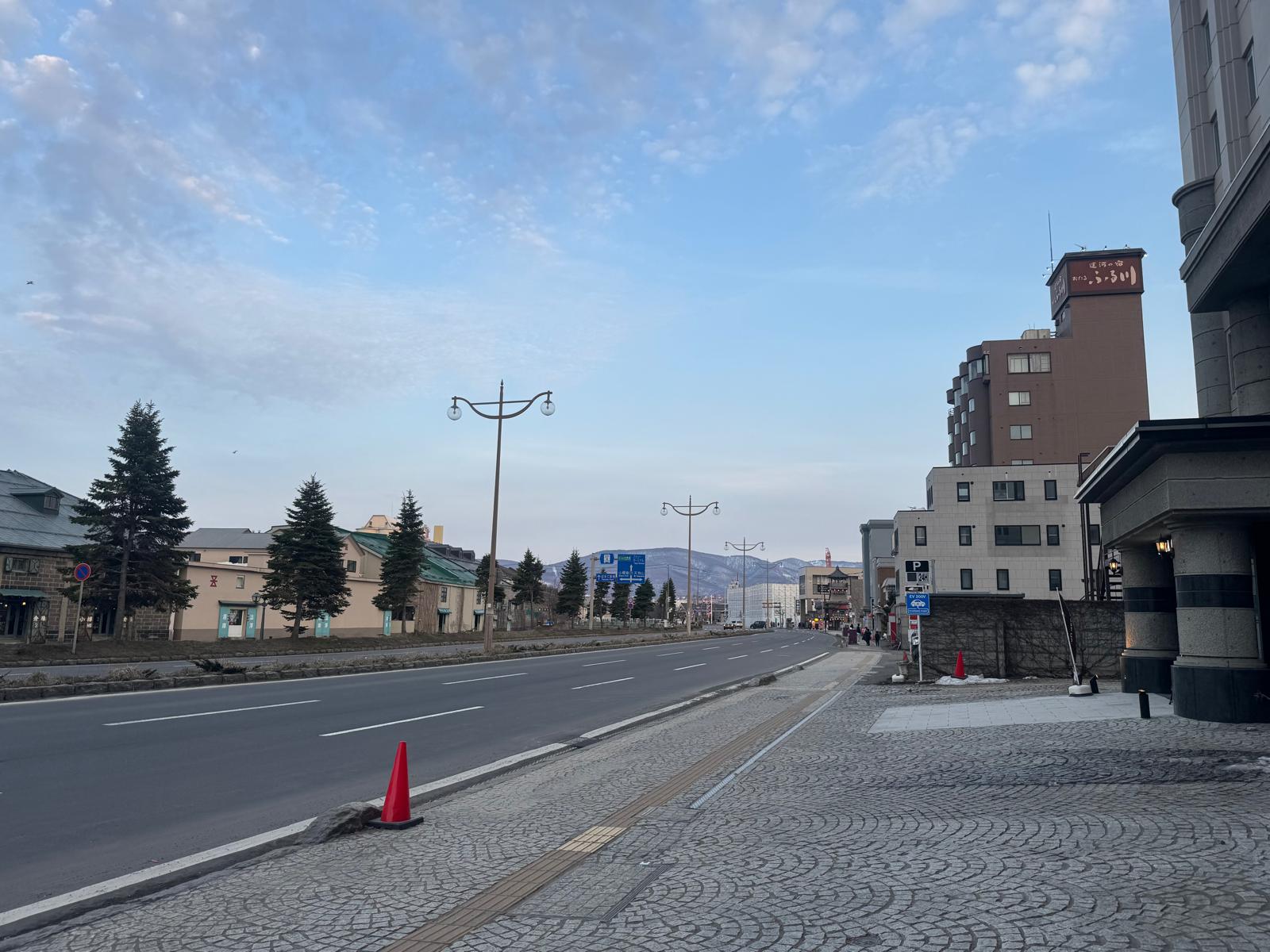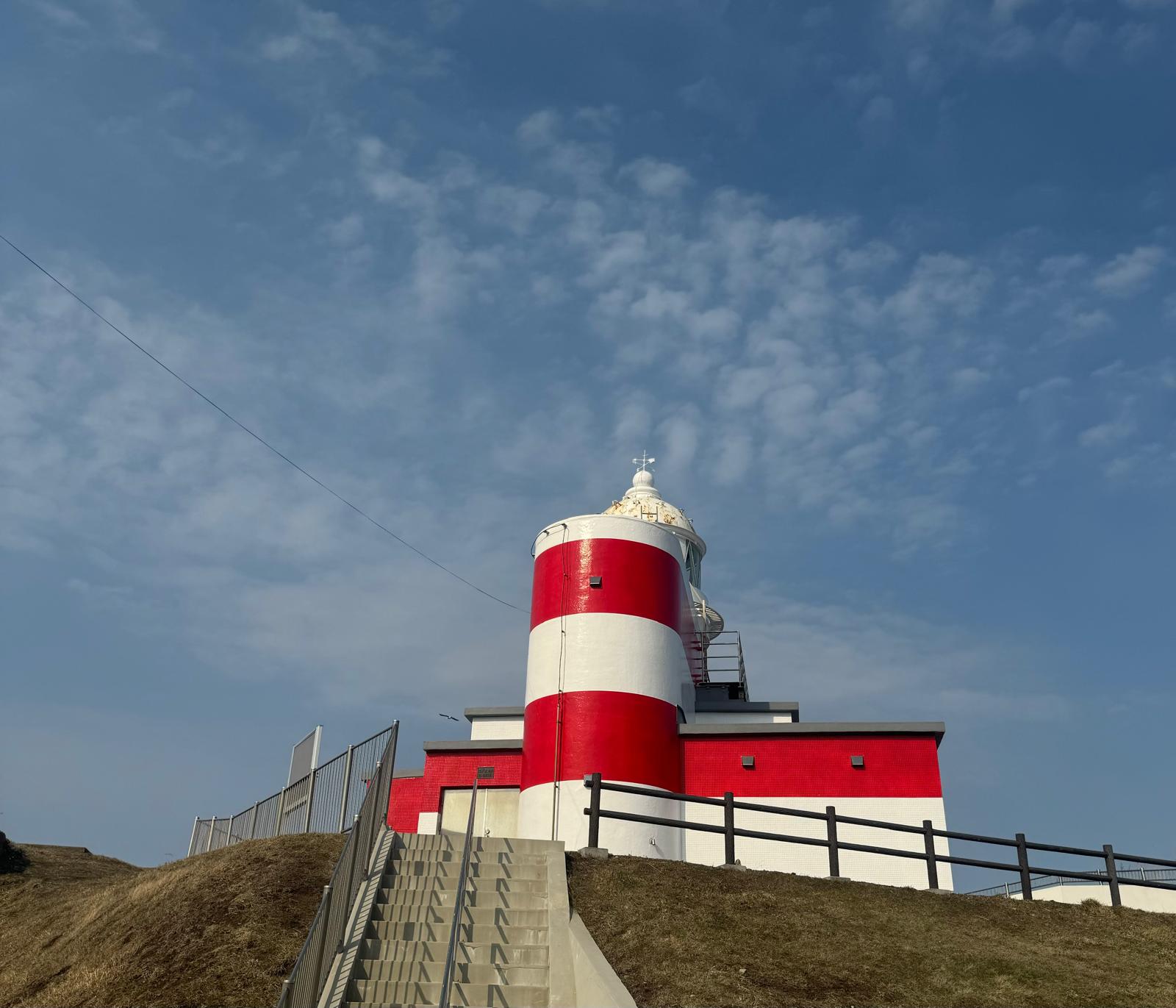十七 Overnight trip to Otaru – Part 1

I read somewhere that Hokkaido, the northernmost island of Japan, is sometimes described as being shaped like an ‘ishikari nabe’, a type of hot pot dish. This comparison is made due to Hokkaido’s distinctive shape resembling a pot or bowl, with the Ishikari River running through its central region.
Travelling across the ishikari nabe
On April 3rd, my daughter (Amiria) and I went on a road trip from Asahikawa to Otaru, which happens to be sister city to Dunedin, New Zealand, a city I lived in for 25 years. Otaru is a port city, and is situated adjacent to the Sea of Japan, in the northern Shiribeshi Subprefecture. It was originally an Ainu settlement, and the name , ‘Otaru’, is of Ainu origin, possibly meaning, ‘River running through the sandy beach’.

Although I’ve visited Hokkaido many times, this was the first time I’d actually been as far as the coast (in any direction), and I was looking forward to the experience. Hence, I took numerous photos, and I apologise if this post has a greater emphasis on images than on content.
Heading south
We drove the 170 km journey south-west via Sapporo, following the tolled highway. Around us the countryside gradually showed signs of the Spring thaw, although every so often, even as far south as Sapporo, we came across fields of thick white snow. As we drove I had the luxury of being the passenger so could gaze out at the scenery and I was once again reminded of how the light in the northern hemisphere is quite different from that of New Zealand, where even the distant features are sharply defined. The Hokkaido hills and mountains appeared as if through a hazy blueish filter, with the effect, i.e., the overall ‘blue-greyedness’, becoming more intense as the distance increased. I recalled noticing the same phenomenon over 20 years ago, while driving on long stretches of road from Nebraska in the mid west of the USA, down through Colorado.
The Venice of the ‘wild north’
Once we’d passed through the outskirts of Sapporo, we headed northwest to Otaru, leaving behind the flat plains of the central region and beginning to follow the jagged contours of the hills. There was a briny feel to the air.

At the somewhat subdued time of year that is winter turning to spring, and when the landscape is neither deeply snowy, nor lush and summery, the small towns and cities can look dull and uninteresting, and yet as we drove into the city, my first impressions of Otaru were of a pleasant kind of town. The air felt open and clean, and there were seagulls squawking, rather than crows. I caught glimpses of small craft bobbing close to shore, and even the steep hills rising up behind the city area had a reassuring feel–no doubt due to having grown up in Wellington, and later living all that time in Dunedin. I love a hilly city.
Otaru has a rich history, and perhaps one day I’ll visit again with more time on my hands. I’ve seen the city referred to as the ‘Venice of the wild north’, due to its famous canal, its thriving glass blowing industry and also its picturesque 19th century European-style buildings.

The harbour is situated at the bottom edge of a sweeping upward curve that travels a little to the right, and then stretches up and around to the left, toward Russia. Looking from the sea’s edge toward that curve, you can just make out wind turbines in the distance.
Shukutsu

The Shukutsu area, which encompasses a north-east facing promotory, the Hiyoriyama lighthouse, and an aquarium, originally housed the wealthy tycoons who controlled the herring industry. They built huge mansions where they lived alongside their seasonal workers. Interestingly, much of the herring caught off the Hokkaido coast was destined to be turned into fertiliser, rather than eaten. Over-fishing led to the decline of fish stocks and the herring businesses collapsed in the 1950s.
This collapse, as well as affecting the lives of countless fishing folk, also had a direct effect on the city’s glass-blowers, who, up to that point, made the glass buoys used by the fishing boats. Hokkaido was slow to adopt electrification, so they were already called on to produce glass oil lamps for the outlying areas, and they then turned their skills to producing more delicate items. Otaru is now known for its beautiful glass objects.
Because we basically only had one afternoon to see the local sights (we had to get away early the following day), we decided to (1) visit the city’s two main look-outs, (2) try to get down to the water’s edge so that I could touch the ocean, (3) check in to the hotel, (4) take a walk along the canal, (5) go out for dinner (we’d had the good sense to book a table at a well-reviewed Izakaya), (6) find a place for dessert, (7) walk back to the hotel via the canal, (8) soak in an onsen, and (9) call it a night. I personally felt I’d be quite satisfied if we managed to achieve even 2/3 of the items on the list.
Hiyoriyama lighthouse

So, first of all we drove up to get a closer look at the Hiyoriyama lighthouse, a noticeable red and white striped structure perched at the tip of the promontory.

The views were incredible, and for early April in Hokkaido, it was surprisingly mild and calm; I was only wearing a t-shirt and didn’t feel remotely cold.
Down to the water’s edge

We then walked down the gravel road we’d just driven up to investigate the sea, as this seemed like the only chance we might have to achieve this. In Japan, it’s not the custom to just ‘park on the street’, the way it is in New Zealand, and we could see no other place close to the water where we could leave the car while we paid the ocean a quick visit. In fact, it’s not only ‘not the custom’, there are literally no parking spaces on the sides of the roads.
When we drew closer we found that the only area with access to the water was closed off with ropes and ‘no entry’ signs, but there was no-one around so we ducked under the ropes, walked as briskly as we dared across a flat, dusty area, and then scrambled down a steep bank of large stones to the water’s edge. Once we were out of sight of the road, Amiria sat on the rocks while I scrummaged around for interesting things to photograph. The water was crystal clear, but the stones were steep and difficult to balance on, and the small waves kept washing in, so all I saw were a few sea snails, until some blue fish appeared–they seemed as curious about us as we were about them.

The sun was getting lower and we were reminded to get a wriggle on, so we made our way back to the car, then drove to the Cape Observatory for a different view. And of course I took some more photos!
[to be continued]

